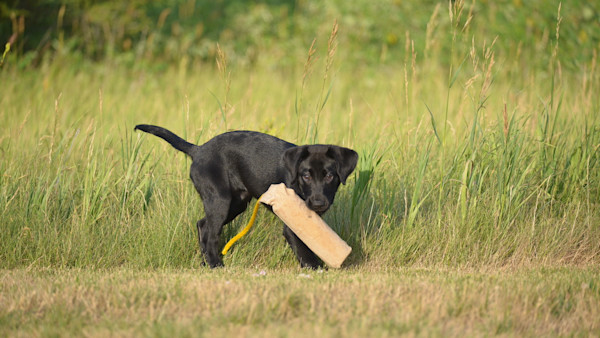You think that you’re not a dog trainer, but if you own a dog, you are.
While you might not get paid for your skills at molding lunatic teenage Labs into pheasant hunting machines, you have an obligation to train your personal dog.
Even if you outsource some of the big stuff to a pro, like gunfire or live bird introductions, you’re still responsible for most of the training. Your dog’s behaviors are a reflection of your efforts, and that’s a scary proposition for a lot of people, mostly because it’s a high-stakes, long-game thing that we only get to do a handful of times in our lives if we’re lucky.
But that’s not an excuse to phone it in. It should be a reason to try to do better, or at least, not make huge mistakes. All of this starts with just acknowledging what it takes to get a dog to fundamentally understand what you want it to do.
Time Is On Your Side (Yes, It Really Is)
Pro trainers generally operate on strict timelines because they have to. They don’t have the luxury of letting a dog develop in a way that would take four months, when they only have six or eight weeks to check a whole bunch of stuff off the list.
This reality tends to color the whole dog training thought process for non-pros, in a way that isn’t helpful. If you are training your own dog, you have the luxury of time. You also have the opportunity to not use your time wisely, which is a huge mistake.
This has been written a million times, so why not one more? Consistency is everything with dogs. It’s not about cumulative hours in any one time frame, but about day-to-day consistency. Even the best, most intelligent, and well-bred dogs have limited attention spans. The younger they are, the more limited their attention spans are.
If you have an hour of time in one block, to get your dog to sit or stay or heel or whatever, you might get 15 minutes of good training in. The other 45, you’ll be fighting a losing battle. But if you take that hour and spread it out into five or six days of short lessons, you’ll be way better off. This almost guarantees your dog will be fired up to work in any session, and won’t get burned out. The value of small chunks of time over many days versus a one-off marathon is almost immeasurable.
Self Awareness
One of my more vivid memories from my youth was watching my dad try to assemble an exercise bike in the living room. It wasn’t going well, and when his last nerve snapped, he threw a screwdriver against the floor so hard it hit the ceiling.
I don’t want to get in trouble for not including ladies here, but the truth is that us men are emotional morons. We go from zero to ballistic, and it rarely makes the situation better. When it comes to training dogs, this is a big problem.
Some days, the energy is just off. Maybe your dog doesn’t feel well or is too keyed up from being crated too long. Maybe there is some sort of new distraction at play that we don’t even recognize, which pulls our dog’s attention away from a drill we thought they had mastered.
No matter what derails a session, losing your mind and having a temper tantrum will only cause more problems. Good dog trainers know how to read a lost cause session, or better yet, how to redirect a dog into something else that’s beneficial. Try to do that.
If something is not working out, don’t assume that the dog is simply being a shithead. Figure out what’s going wrong, and then what the solution is. The more you get into this habit, the more you get out of every training session—and your dog will learn to trust you more.
The Right Tools for the Job
I’ve had the good fortune to spend a lot of time with professional trainers, and they are masters at using every tool in the arsenal. Bumpers, e-collars, check cords, dummy launchers, and a whole host of other tools come into play throughout the development of dogs.
You don’t need to clean out the dog training aisle of your local Scheel’s store to train your dog, but you should have the right tools and know how to use them. Not only does this open up more room for new drills that will closely mimic your future upland and duck hunting adventures, but it also keeps things exciting for the dog. This matters more than most of us think, because boredom leads to complacency and behavior issues.
A dog that is tired of hand-thrown retrieves will lose its mind with a dummy launcher. It’s simple, and often a pretty minimal investment, but the right tools matter, a lot. Figure out what you might need, and then figure out how to use them. You and your dog will be better off for it.





Conversation